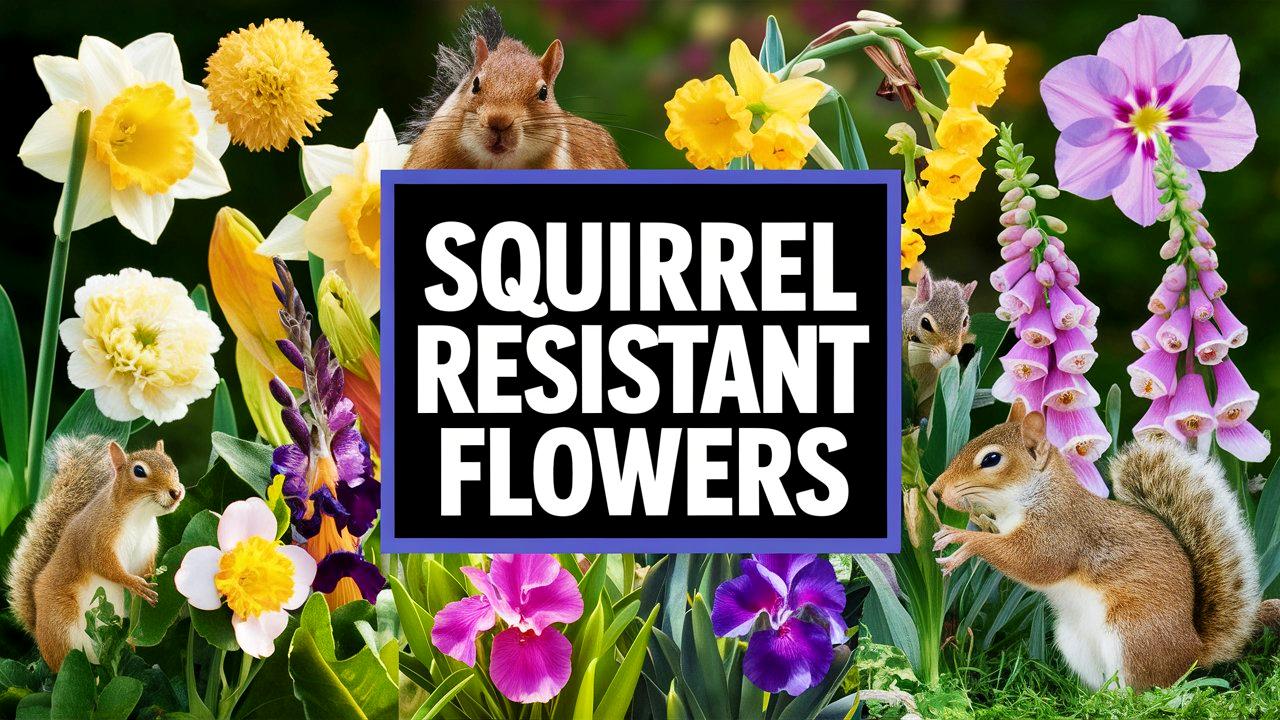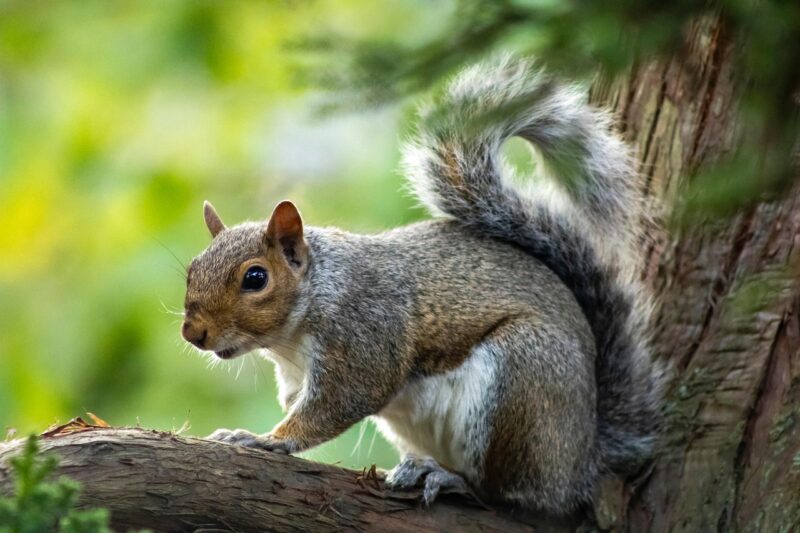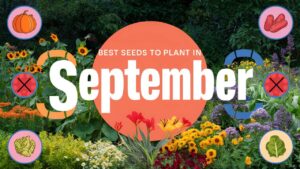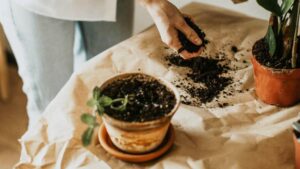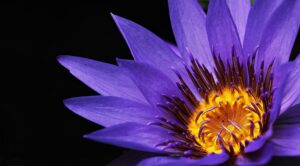Below are some of the most effective flowers to incorporate into your garden to discourage these furry intruders.
Do Squirrels Eat Flowers?
Squirrels, notorious for their acrobatic antics and bushy tails, are often seen as charming creatures in our parks and backyards. However, their love for foraging can lead to significant gardening frustrations, particularly when it comes to flowers. These small mammals are opportunistic feeders, and while their primary diet consists of seeds, nuts, and fruits, they aren’t above nibbling on flowers and their tender shoots.
Squirrels have a penchant for a variety of plant parts. They might dig up bulbs, munch on roots, or snack on leaves, and flowers are certainly on their menu. Tender blossoms and young buds are particularly inviting to these critters. Species that produce delicate or sweet-tasting blooms are especially vulnerable, drawing squirrels closer. While they might not devastate an entire garden in one fell swoop, their feeding habits can certainly detract from the beauty and vigor of flower beds.
Understanding the diet of squirrels can help gardeners protect their floral investments. The good news is that many flowers deter squirrels due to their taste, smell, or physical characteristics. By strategically incorporating certain plants known to repel squirrels, you can create a vibrant garden while minimizing unwanted nibbling. Below, we explore various flowers that not only resist squirrel interest but can also bring delightful color and fragrance to your garden.
What Are the Most Common Natural Squirrel Repellent Plants?
Several species of flowers are known to have properties that tend to repel squirrels due to their smell, taste, or even toxic characteristics.
Daffodil
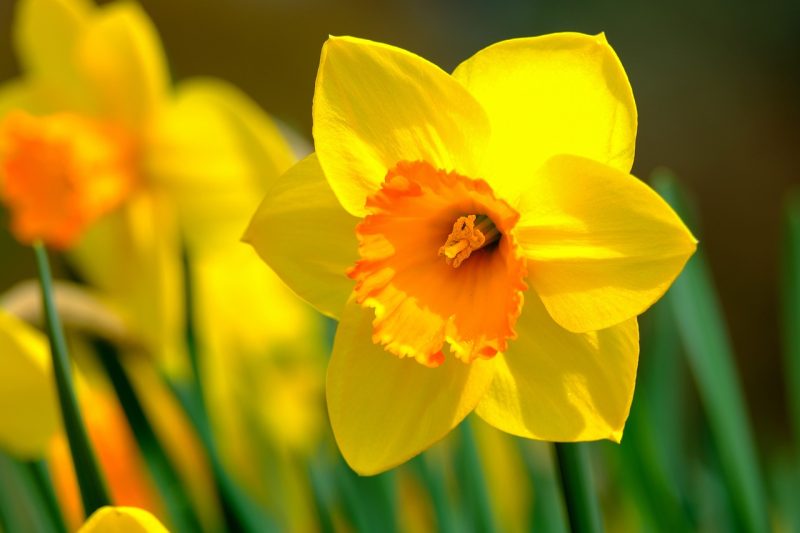
Daffodils, with their bright yellow and white trumpets, are not only a delight in early spring but also a strong deterrent to squirrels. The key lies in their bulb, which contains a compound called lycorine. This alkaloid is toxic and unpalatable to many animals, including squirrels, deterring them from digging up these bulbs or eating the flowers themselves. Daffodils are also drought-resistant once established, making them an excellent choice for low-maintenance gardens. They thrive in well-drained soil and can naturalize, spreading their cheerful blooms year after year.
In addition to their squirrel-resistant properties, daffodils contribute to the early spring landscape when few other flowers are blooming. Their toxicity protects them not only from squirrels but also from deer and other herbivores. Planting daffodils in clusters can create a striking focal point in your garden.
Allium
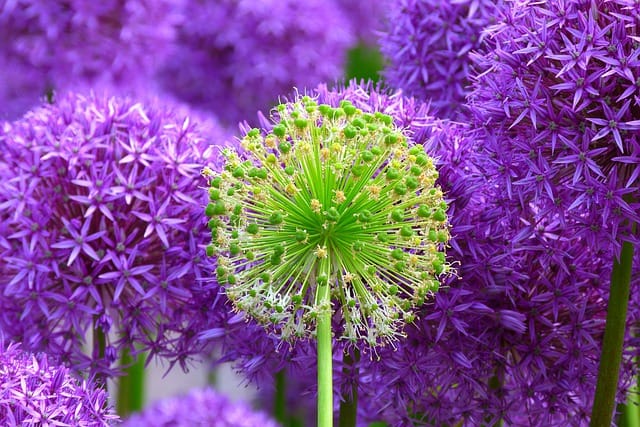
Alliums, commonly known as ornamental onions, are another fantastic option for squirrel-resistant gardening. Known for their striking globes of purple or white flowers atop tall stems, alliums release a strong onion-like odor that squirrels and many other pests find off-putting. This aromatic quality not only deters squirrels but also helps to ward off some garden pests, making alliums a dual threat against unwanted animal visitors.
These perennials are also quite hardy, thriving in various soil types and conditions. They prefer full sun and well-drained soil, which ensures their bulbs get the proper nourishment needed to produce their stunning blooms. Alliums bloom in late spring to early summer, providing color and height to your flower beds. Moreover, after the blooming period, their seed heads can bring texture to the garden during the fall and winter months.
Bleeding Heart
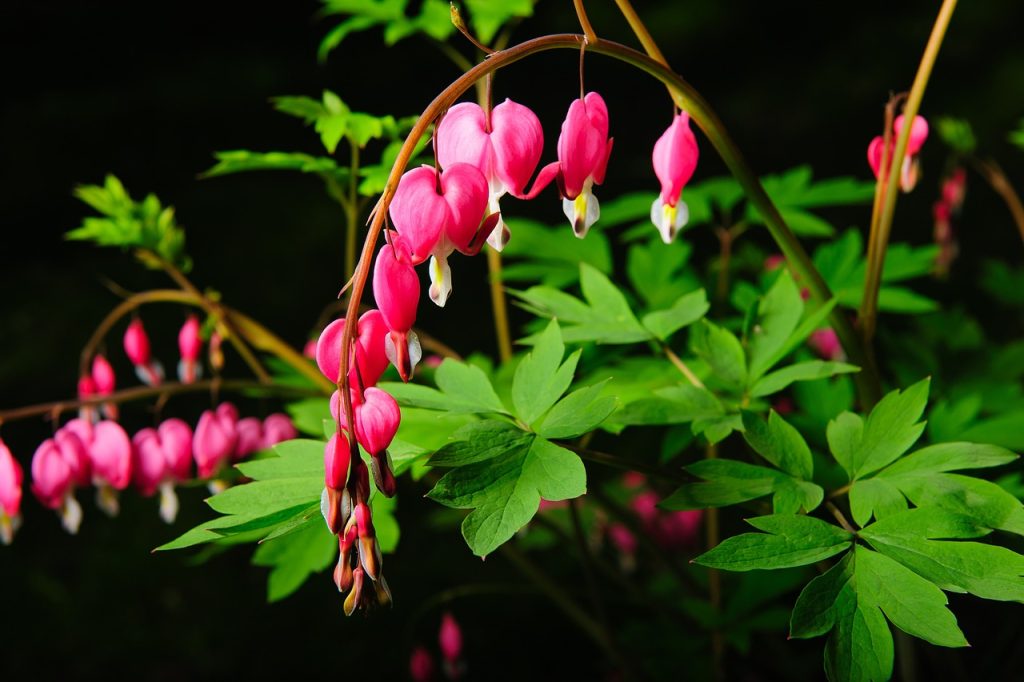
The bleeding heart (Dicentra spectabilis) is a unique perennial flower characterized by its heart-shaped blossoms that dangle from arching stems. This plant, while not toxic to squirrels, has a strong odor and a bitter taste that makes it less appealing for these animals. Its delicate pink or white flowers bloom in spring, making it a beautiful addition to shaded areas of your garden.
Bleeding hearts prefer partial to full shade and moist, rich soil, creating a lovely contrast in shaded woodland gardens. They provide continuous blooms through late spring and can even continue blooming throughout the summer in ideal conditions. This can provide a colorful, dense coverage that squirrels may find uninviting, as they prefer more open and accessible spaces for foraging.
Irises
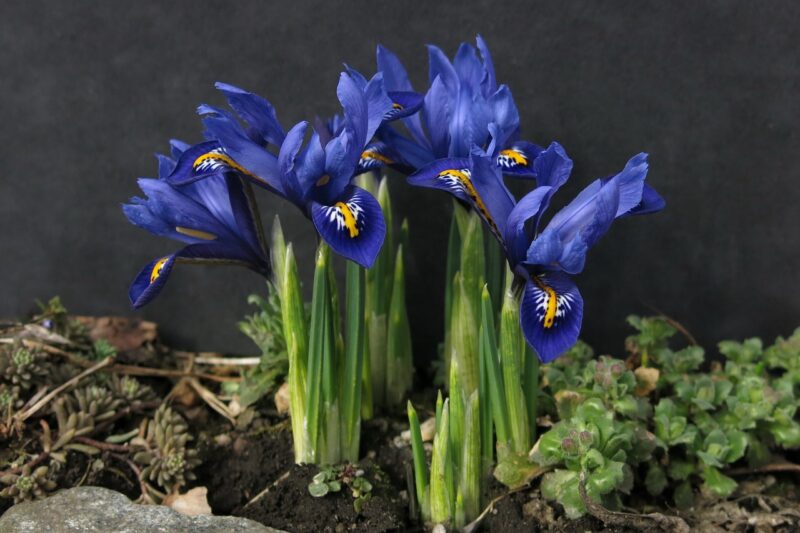
Irises are another delightful flower known for their vibrant colors and unique shapes. While they come in a variety of species and hybrids, many types of irises, especially bearded irises, are generally unattractive to squirrels. The substances present in their foliage can give off an odor that is less than appealing to many animals. Furthermore, their thick, fibrous leaves are difficult for squirrels to chew and digest.
Irises thrive in a variety of environments, from sunny borders to partially shaded areas, depending on the type. They are fairly hardy and can adapt well to different soil types, making them versatile in landscape design. Flowering in late spring, irises come in an array of colors, providing a stunning display that can brighten any garden while successfully keeping squirrels at bay.
Fritillary
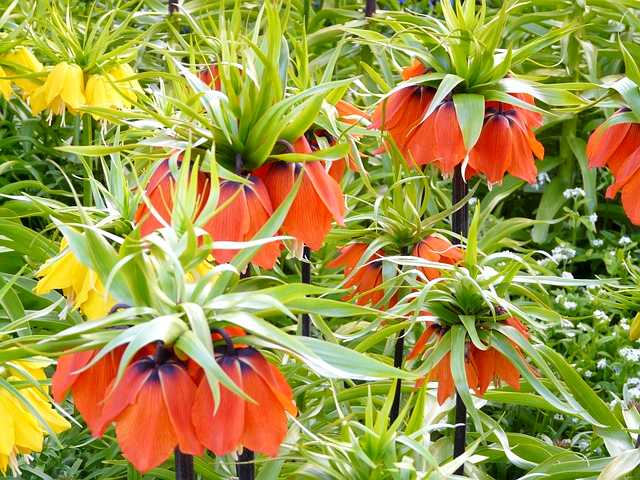
Fritillaries belong to a genus of flowering plants that produce elegant, nodding flowers often decorated with checkered patterns. Certain species, like the snake’s head fritillary (Fritillaria meleagris), are not only visually appealing but also tend to be overlooked by hungry squirrels. The reason lies in their less-than-desirable taste—a feature many other garden visitors also share.
These delicate flowers prefer well-drained soil and a sunny to slightly shaded location. They typically bloom in the spring, adding a soft tone to your garden palette. Incorporating fritillaries can create a sophisticated understory in gardens, particularly among other perennials that may attract squirrels. They also attract beneficial pollinators like bees and butterflies, contributing positively to the ecosystem within your garden.
Galanthus
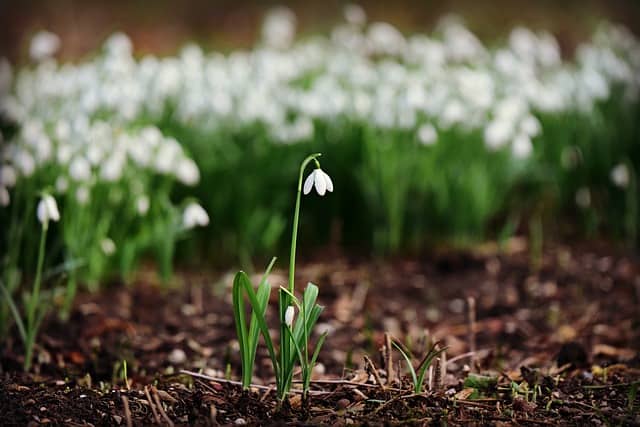
Galanthus, or snowdrops, are delicate bulbous plants that herald the arrival of spring. They bear white, tear-shaped flowers that droplets through the winter snow. Much like daffodils, galanthus contain compounds that are mildly toxic, further deterring squirrels from feasting on them or their bulbs. The bulbs are usually planted in fall, where they can develop roots before winter sets in.
These flowers thrive in well-drained soil and can naturalize in lawns and at the edges of woodland gardens, creating a lovely sea of white blooms in late winter or early spring. Galanthus grows best in partial shade, making them ideal for shady spots where few other flowers bloom at this time. Their early blooming period coincides with a time when squirrels have few other food sources, thus reducing the temptation to forage there.
Dianthus
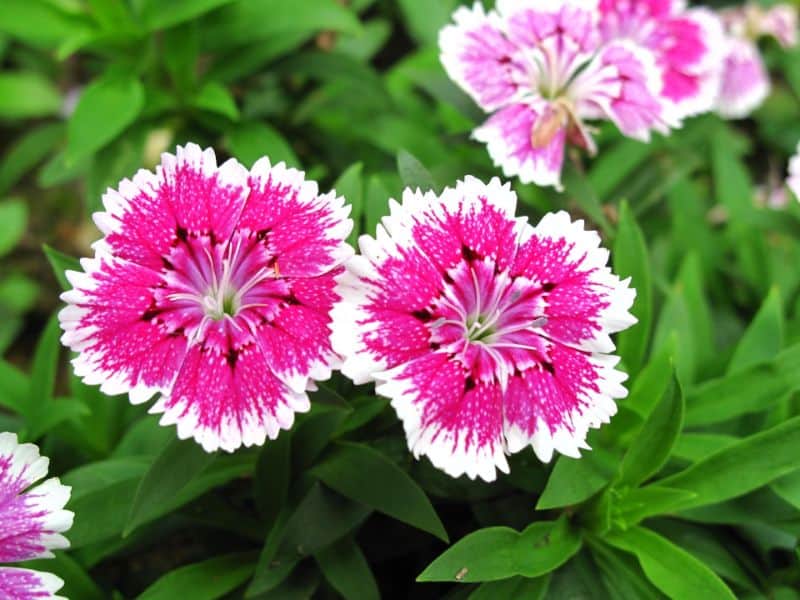
Dianthus, popularly known as pinks or carnations, are beautiful flowering plants that offer a range of hues and delightful fragrances. While they are not inherently toxic, their strong peppery scent can be an effective determent for squirrels. Additionally, many species of dianthus have a sturdy and somewhat fibrous foliage that is not easily consumed, making them less attractive food sources for these animals.
These charming flowers thrive in well-aerated soil with good drainage and need adequate sunlight to flourish. With a long blooming season from late spring to early summer, dianthus can create a colorful border or fill in gaps between other plants. Furthermore, their pleasantly aromatic presence in the garden can enhance the overall sensory experience of your outdoor space while keeping squirrels at bay.
Goldenrod
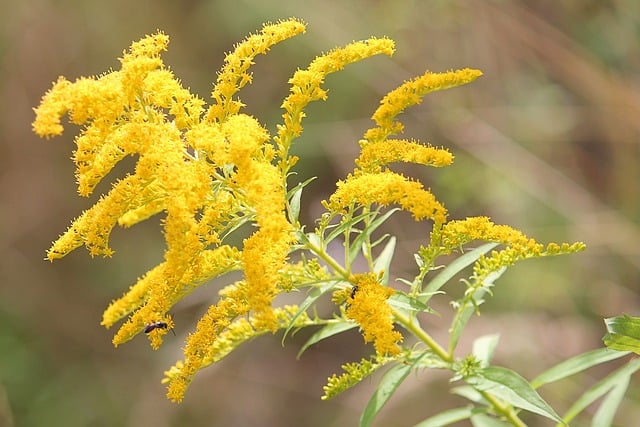
Goldenrod is often misjudged due to its association with allergies; however, it is a beautiful perennial that produces tall stalks adorned with vibrant yellow flowers in late summer and fall. Interestingly, squirrels do not typically favor goldenrod, likely due to its coarse texture and slightly bitter taste. Incorporating goldenrod into your garden not only serves as a deterrent but also acts as valuable nectar for pollinators preparing for winter.
Goldenrod thrives in full sunlight and can adapt to a wide range of soil conditions, making it an excellent choice for wildflower gardens or natural landscaping. This hardy plant’s tenacity and ability to withstand various climates mean that it requires minimal care once established. Its blooms will attract beneficial wildlife while discouraging squirrels and providing a seasonal spectacle to enjoy.
Lily of the Valley
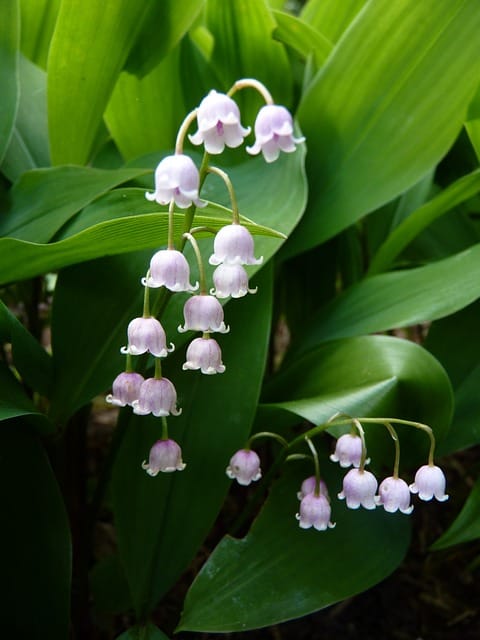
Lily of the Valley (Convallaria majalis) is an enchanting perennial with petite, bell-shaped flowers that bloom in the spring. This plant is particularly valuable for its pleasing fragrance and ability to thrive in shaded areas. However, what makes it particularly notable for this topic is its toxicity. The plant is poisonous to many animals, including squirrels, which makes it an effective deterrent in the garden.
In addition to its aesthetic appeal, lily of the valley spreads easily by rhizomes, creating a lush ground cover that can fill in unwanted spaces in your garden. Its biomechanical strength allows it to thrive in poor soil conditions, and it typically requires very little care aside from initial planting. Moreover, its prolific growth can create an environment that is uninviting for squirrels due to the density and toxicity of the foliage.
Conclusion
Incorporating squirrel-resistant flowers into your garden is not only a way to preserve the integrity of your blooms but also an opportunity to engage with a diverse array of plant species that can enhance aesthetic beauty and ecological balance. Each of the flowers discussed here offers unique characteristics and benefits, providing beauty while serving as a natural deterrent against pesky squirrels.


